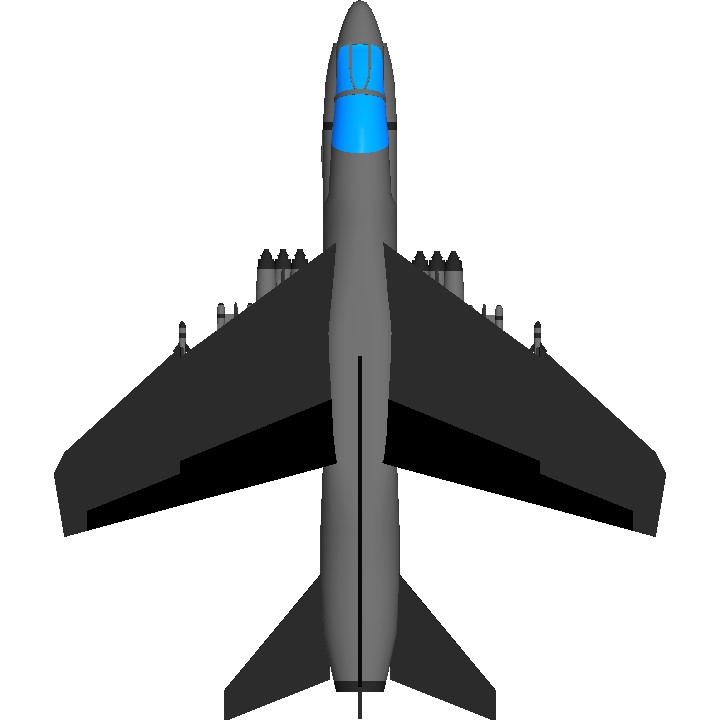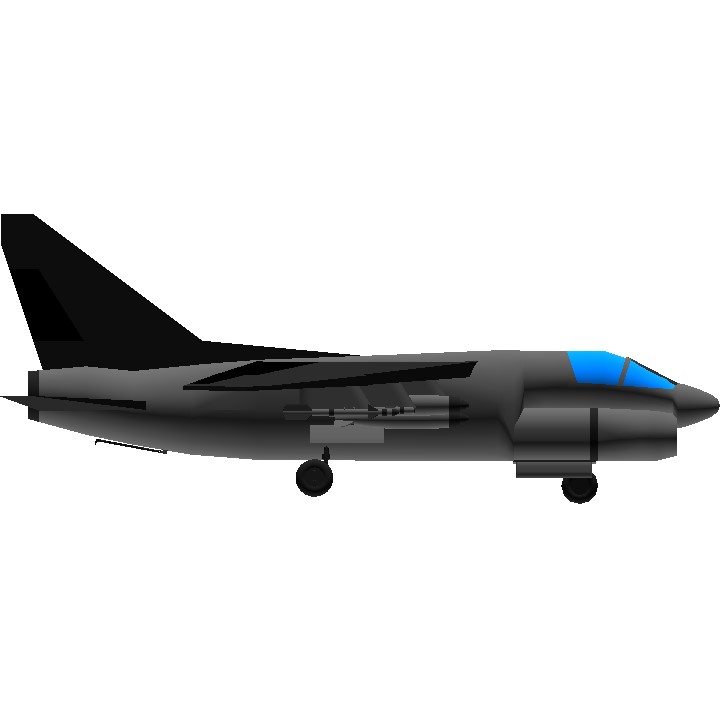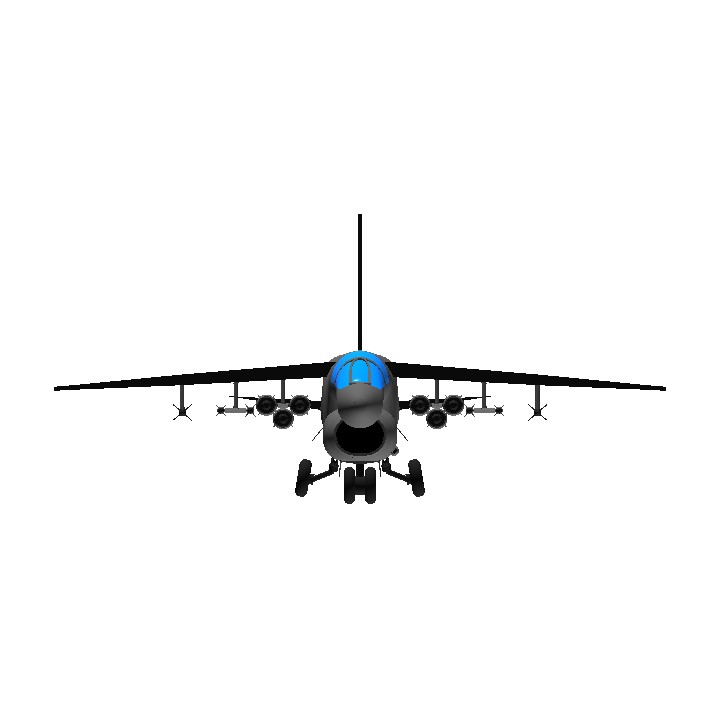Overview
The LTV A-7 Corsair II is a carrier-capable subsonic light attack aircraft developed by Ling-Temco-Vought (LTV) during the 1960s for the United States Navy. It became renowned for its affordability, versatility, and accuracy in delivering air-to-ground ordnance. Below is an overview of its key characteristics, history, and role:
Development and Design
Origins: The A-7 was developed as a replacement for the aging Douglas A-4 Skyhawk, designed to provide enhanced payload capacity and improved avionics while being economical to operate.
First Flight: The prototype A-7 flew for the first time on September 27, 1965. Its design was based on the Vought F-8 Crusader, but the A-7 featured a shorter fuselage, swept wings, and a high-mounted air intake.
Powerplant: Initially powered by a Pratt & Whitney TF30-P-6 turbofan engine, later models like the A-7D and A-7E received the more powerful Allison TF41-A-2 engine.
Avionics: One of its most notable innovations was its advanced avionics suite, including an accurate inertial navigation system and a head-up display (HUD), which enhanced its precision in delivering munitions.
Operational History
Vietnam War: The A-7 Corsair II made its combat debut in the Vietnam War, where it performed close air support, interdiction, and bombing missions. Its ability to carry a large payload of bombs and its impressive range made it effective in the prolonged conflict.
Post-Vietnam: The Corsair II continued to serve in subsequent conflicts, including the 1983 invasion of Grenada, the 1986 bombing of Libya, and Operation Desert Storm in 1991. It was praised for its reliability and precision in the battlefield.
Roles and Capabilities
Ground Attack: The A-7 was primarily a ground-attack aircraft, capable of carrying a wide range of ordnance including bombs, rockets, missiles (such as the AGM-65 Maverick), and cannon pods.
Carrier Operations: Its ability to operate from aircraft carriers made it a key asset in naval operations. The A-7 featured folding wings for carrier storage and catapult launch capability.
Versatility: Variants like the A-7D (used by the U.S. Air Force) and A-7E (enhanced naval version) expanded the Corsair's role, with modifications for different theaters of operation.
Retirement
Service Life: The A-7 was progressively phased out of U.S. service in the late 1980s and early 1990s, replaced by aircraft such as the F/A-18 Hornet. However, it continued to serve in the air forces of countries like Greece and Portugal for several more years.
Legacy: Though retired, the A-7 Corsair II remains a symbol of cost-effective, precision attack aviation during the Cold War, and its innovations in avionics set the standard for future ground-attack aircraft.
Key Specifications
Crew: 1
Length: 46 ft 1 in (14.06 m)
Wingspan: 38 ft 9 in (11.81 m)
Maximum Speed: 691 mph (1,112 km/h) at sea level
Range: 2,280 miles (3,670 km)
Armament: One M61 Vulcan 20 mm cannon, plus up to 15,000 lbs of bombs, missiles, and rockets.
In conclusion, the LTV A-7 Corsair II was an effective and reliable attack aircraft that served both the U.S. Navy and Air Force with distinction. Its advanced avionics, combined with a large payload and long range, made it a versatile platform in many conflicts throughout the latter half of the 20th century.
Specifications
Spotlights
- KPLBall 9 months ago
General Characteristics
- Successors 1 airplane(s) +35 bonus
- Created On Android
- Wingspan 47.3ft (14.4m)
- Length 55.9ft (17.0m)
- Height 22.4ft (6.8m)
- Empty Weight 26,440lbs (11,993kg)
- Loaded Weight 40,497lbs (18,369kg)
Performance
- Power/Weight Ratio 3.329
- Wing Loading 52.8lbs/ft2 (257.9kg/m2)
- Wing Area 766.7ft2 (71.2m2)
- Drag Points 5718
Parts
- Number of Parts 104
- Control Surfaces 5
- Performance Cost 695







e ar h u rt i
@RealMicroZackSP t in n i tu s
@Monarchii 😰😰
@RealMicroZackSP d a mn y ou
@Monarchii s o o r i
@RealMicroZackSP a u gh my ears
@Monarchii AUUGH FINE! All aircraft take off immediately!
@RealMicroZackSP OI, DON'T SLEEP HERE, MOVE TO THE COUCH! MOOOOVEEEEE :3
Monarchy i mean @Monarchii finally upvote my a7, i can finally rest now...
@localf15enjoyer yes?
@Monarchii
@MAPA
@RMZSPinactive
I saw one of these at space camp
@RMZSPinactive Cornsair
Tag Zwei
4: @001
5: @Zhixunlin23
6: @CrestelAeronautics
Tag Eins
1: @SPTNR
2: @Rjenteissussy
3: @KPLBall